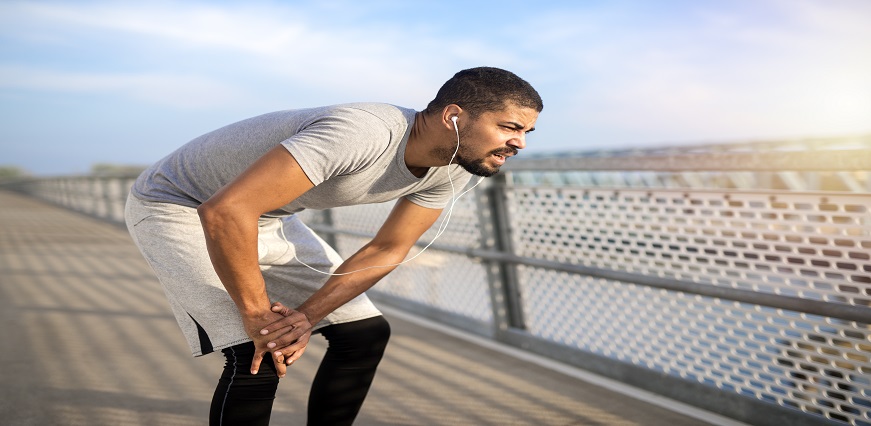


Frequent knee pain is common, but it’s not usually a sign of anything serious. There are many possible causes, which can range from a simple muscle strain or tendonitis, to some type of arthritis. If the pain doesn’t go away within a few days or continues to worsen over time, you should have your physician examine your knee. Knee pain may become more frequent as you age. You’re also more at risk if you are overweight and active in sports or other physical activities. Knee pain may sometimes be the result of a sports or other injury.
Knee pain is a painful complication that affects many people. You may feel this pain as a result of an injury, such as stretching or tearing your ligaments or cartilage. Medical conditions, like arthritis and gout, can also cause knee pain in the long term.
There are several different types of minor knee problems that don't require surgery. Sometimes, just physical therapy and a brace will help alleviate the pain. But if that doesn't work, surgery may be your only option.
Injury is one of the most common causes of knee pain. The knee is a complex joint with many different structures, including bones, ligaments, tendons, and muscles. This makes it susceptible to a wide range of injuries.
There are many potential causes of knee pain, and the specific cause can often be difficult to determine. Some common causes of knee pain include:
There are many different treatments for knee pain, depending on the underlying cause. Pain relievers such as ibuprofen or acetaminophen can help reduce inflammation and pain. If your pain is due to arthritis, your doctor may prescribe medication to help reduce inflammation and slow the progression of the disease.
Physical therapy can also be helpful in treating knee pain. Exercises that strengthen the muscles around the knee can help support the joint and reduce stress on the area. Your physical therapist may also recommend using heat or cold therapy to help relieve pain.
If your knee pain is severe, your doctor may recommend surgery to repair damaged tissue or remove debris from the joint. In some cases, joint replacement surgery may be necessary.
There are a few different ways to describe knee pain. The first is the location of the pain. For example, you may feel pain in the front of your knee, known as “anterior knee pain.” Pain behind the knee is called “posterior knee pain.” You may also feel pain on the outside of your knee (lateral knee pain) or on the inside of your knee (medial knee pain).
- Swelling or Stiffness: One of the most common symptom of knee pain is swelling and stiffness. This is usually caused by inflammation or injury to the joint. It can be accompanied by other symptoms such as redness, warmth, and tenderness. Swelling and stiffness are often worse in the morning or after periods of rest. Treatment for swelling and stiffness will depend on the underlying cause. Often, rest, ice, and over-the-counter medications will help to reduce symptoms. If the pain persists or gets worse, it is important to see a doctor so that they can rule out any serious underlying conditions.
- Redness and warmth to the touch: If you have knee pain, you may also notice that the area around your knee is red and warm to the touch. This is usually a sign of inflammation, which can be caused by a number of different things. If you notice that your knee is red and warm to the touch, it's important to see a doctor so they can determine the cause of the inflammation. Once the cause is determined, they can provide you with treatment options to help relieve your pain and swelling.
- Weakness or instability: One of the most common knee pain symptoms is weak or unstable knees. Weak or unstable knees can make it difficult to perform everyday activities, such as walking or going up and down stairs. If you experience this symptom, it's important to seek medical help so that the underlying cause can be diagnosed and treated.
- Inability to fully straighten the knee: One type of knee pain is caused by problems with the patellofemoral joint, which is the joint between the kneecap (patella) and the thighbone (femur). The patellofemoral joint is a “rolling” type of joint, and when it isn’t working properly, it can cause a condition called patellofemoral pain syndrome (PFPS).
PFPS is a broad term used to describe pain in the front of the knee and around the kneecap.
Knee pain is a very common problem that can be caused by a variety of factors. The good news is that there are many things you can do to prevent knee pain.
Here are some tips to help prevent knee pain:
 Allergy Test
Allergy Test
 Anemia Test
Anemia Test
 Auto immune
Auto immune
 Blood disorder
Blood disorder
 Bone and Joint
Bone and Joint
 Cancer Test
Cancer Test
 Cardiology Test
Cardiology Test
 Covid Recovery
Covid Recovery
 Dengue Test
Dengue Test
 Depression
Depression
 Diabetes Test
Diabetes Test
 Fatigue
Fatigue
 Fever Test
Fever Test
 Full body
Full body
 Gastro Test
Gastro Test
 Gastrointestinal
Gastrointestinal
 Gynaecology Test
Gynaecology Test
 Heart Test
Heart Test
 HIV Test
HIV Test
 Hormone Test
Hormone Test
 Hypertension
Hypertension
 Immunity Test
Immunity Test
 Infectious Disease
Infectious Disease
 Infertility Test
Infertility Test
 Influenza Test
Influenza Test
 Iron Test
Iron Test
 Kidney Test
Kidney Test
 Liver Test
Liver Test
 Lung Test
Lung Test
 Nephrology
Nephrology
 Obesity
Obesity
 Orthopedics Test
Orthopedics Test
 Physician
Physician
 Pollution Health Checkup
Pollution Health Checkup
 Pregnancy Test
Pregnancy Test
 Prostate Test
Prostate Test
 Senior Citizen Test
Senior Citizen Test
 STD Test
STD Test
 Thyroid Test
Thyroid Test
 Tuberculosis Test
Tuberculosis Test
 Vitamin Test
Vitamin Test
 Women Health Test
Women Health Test